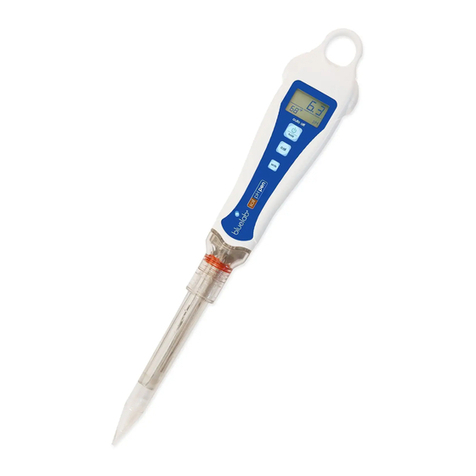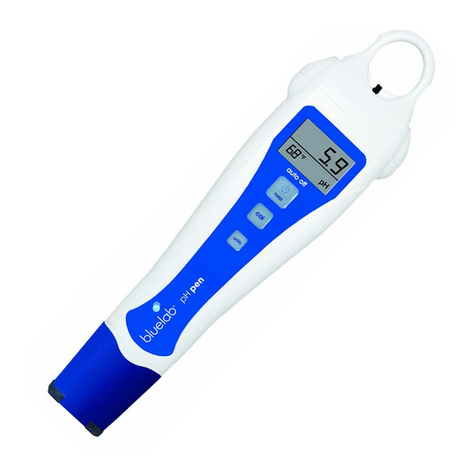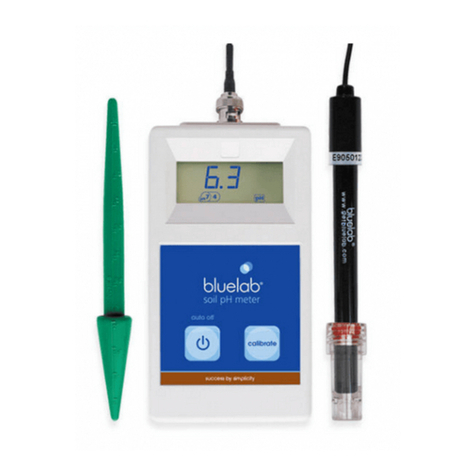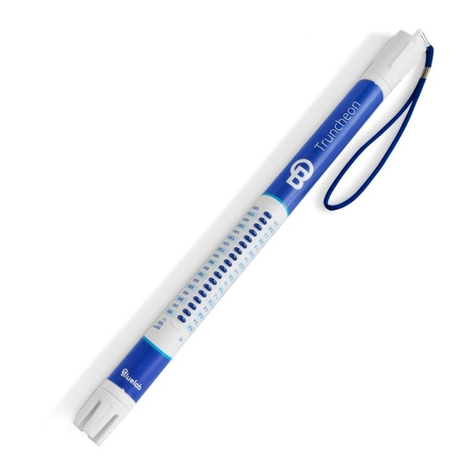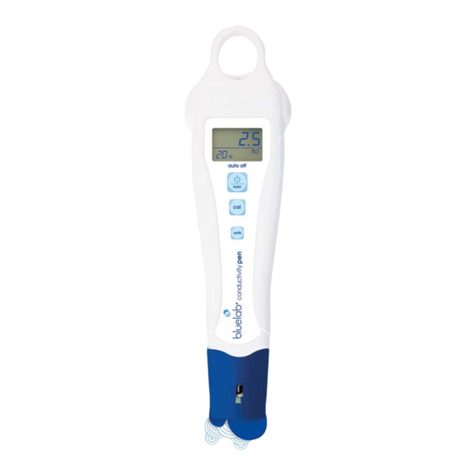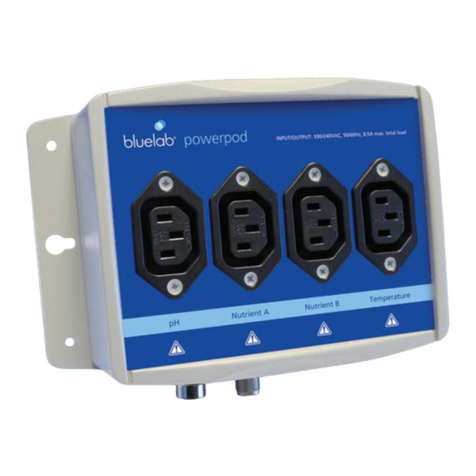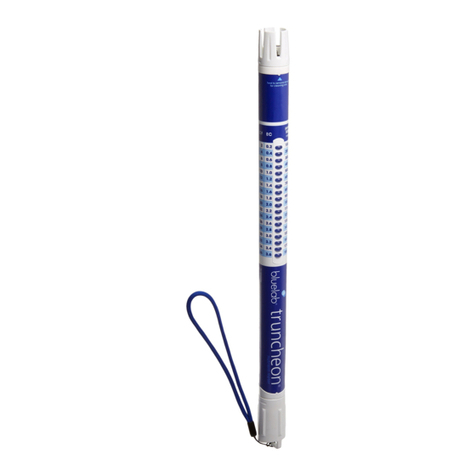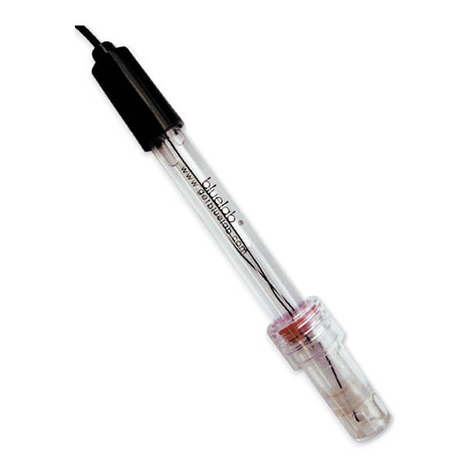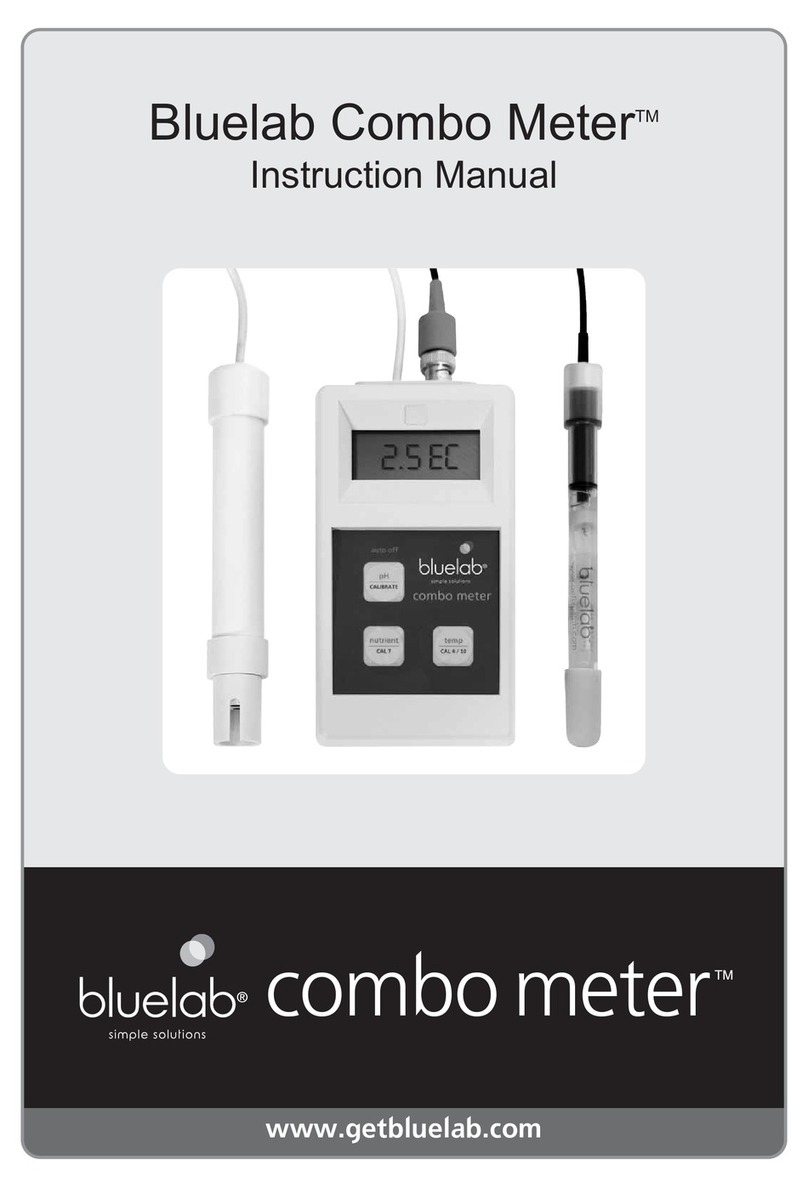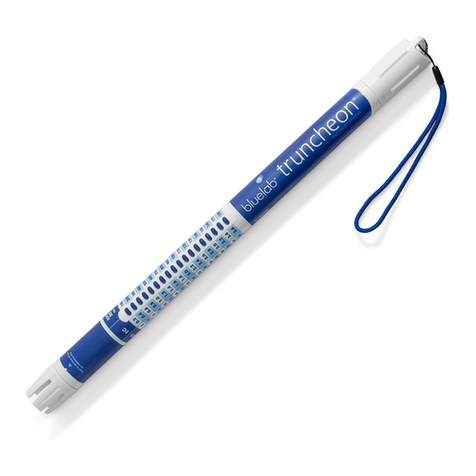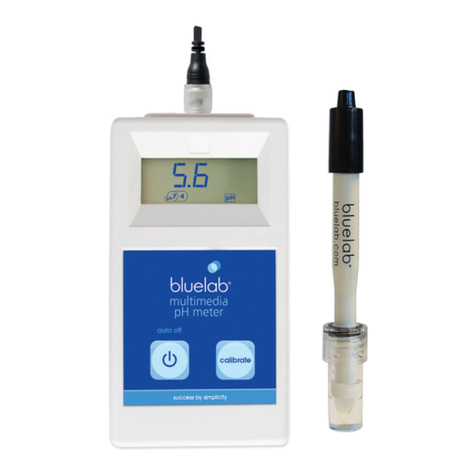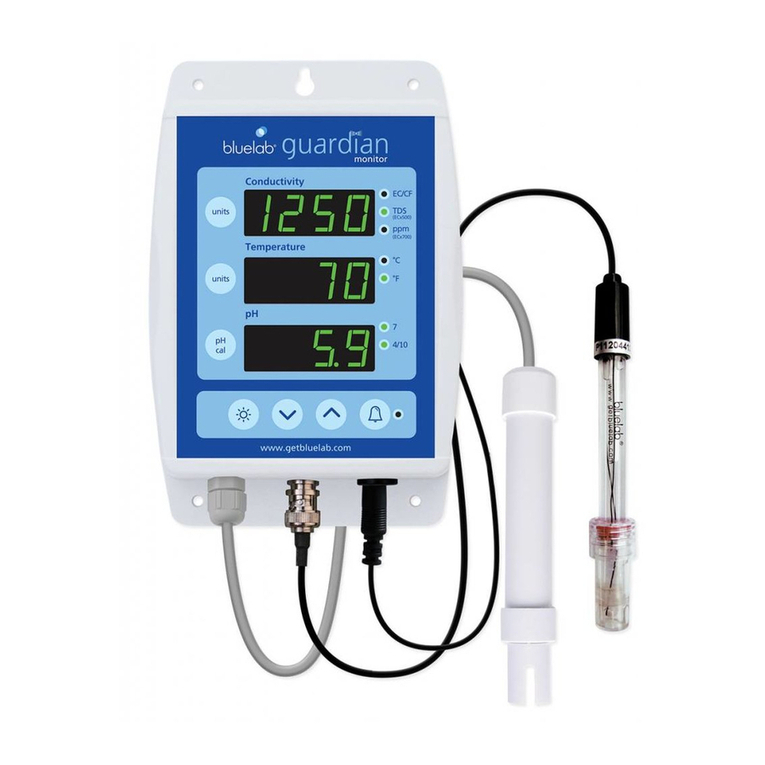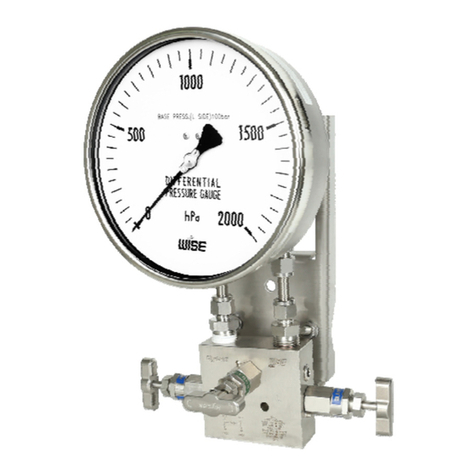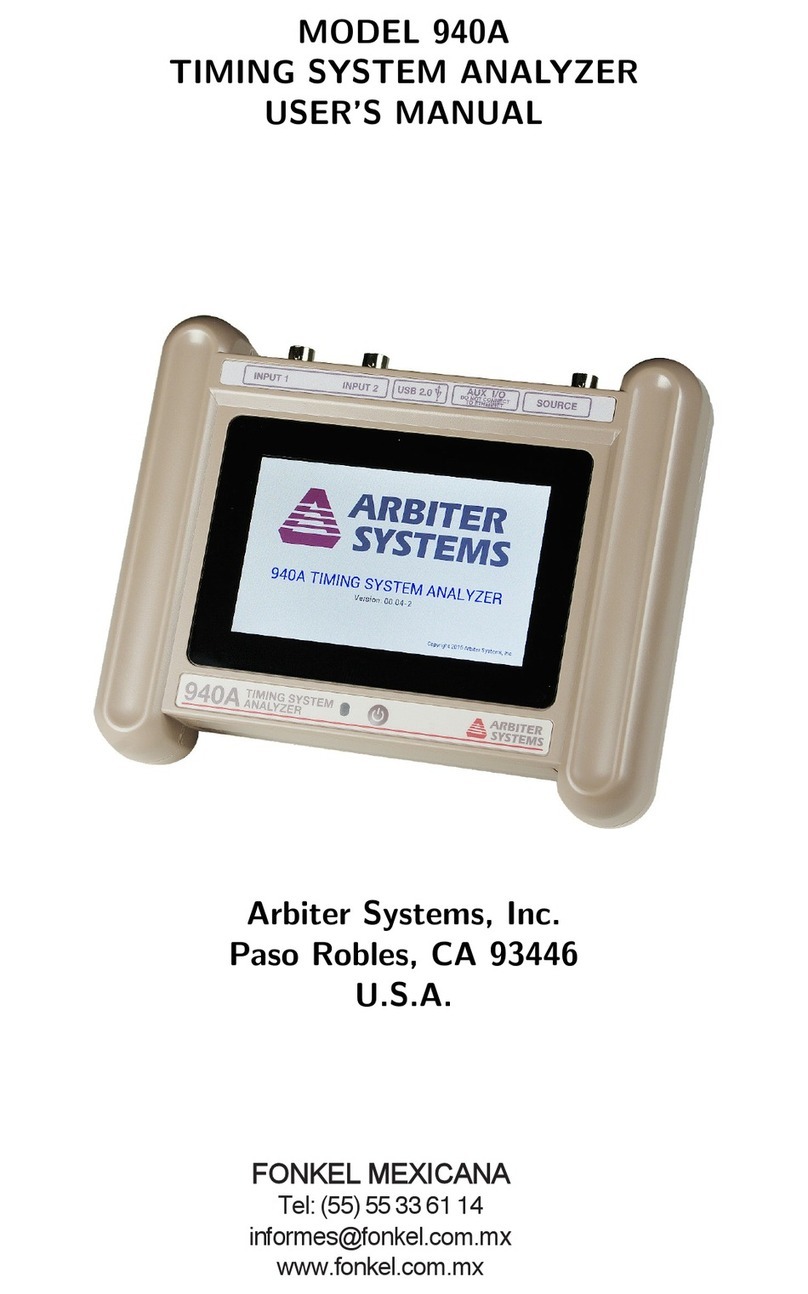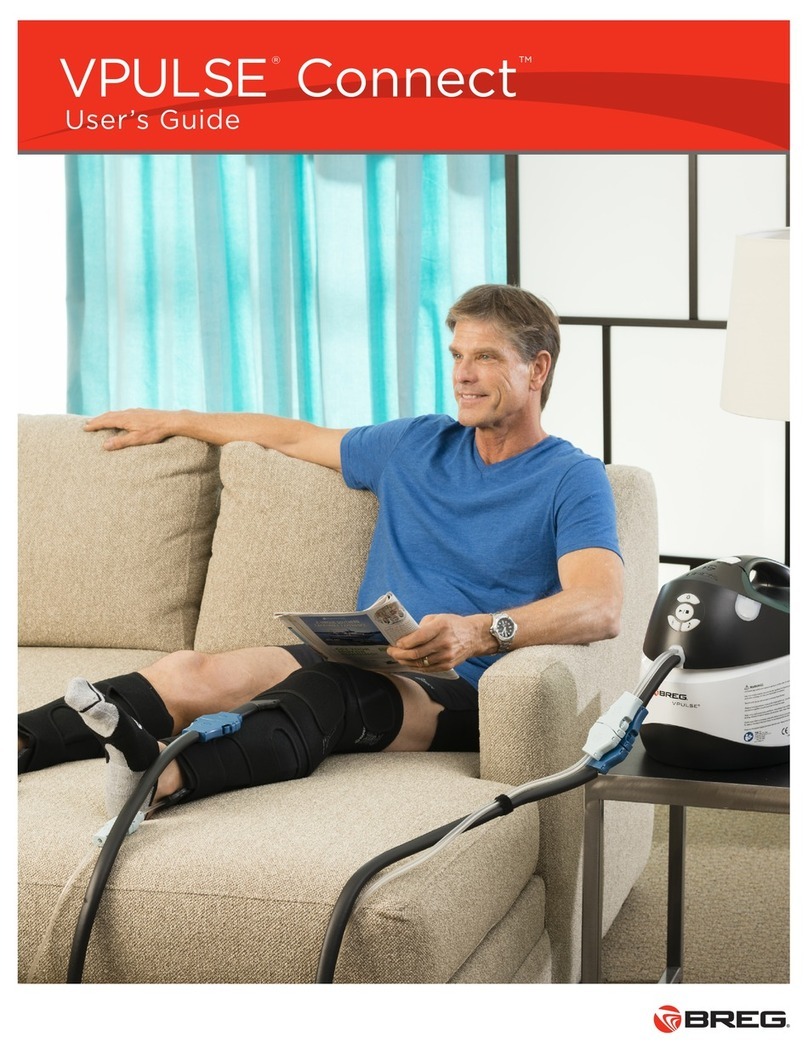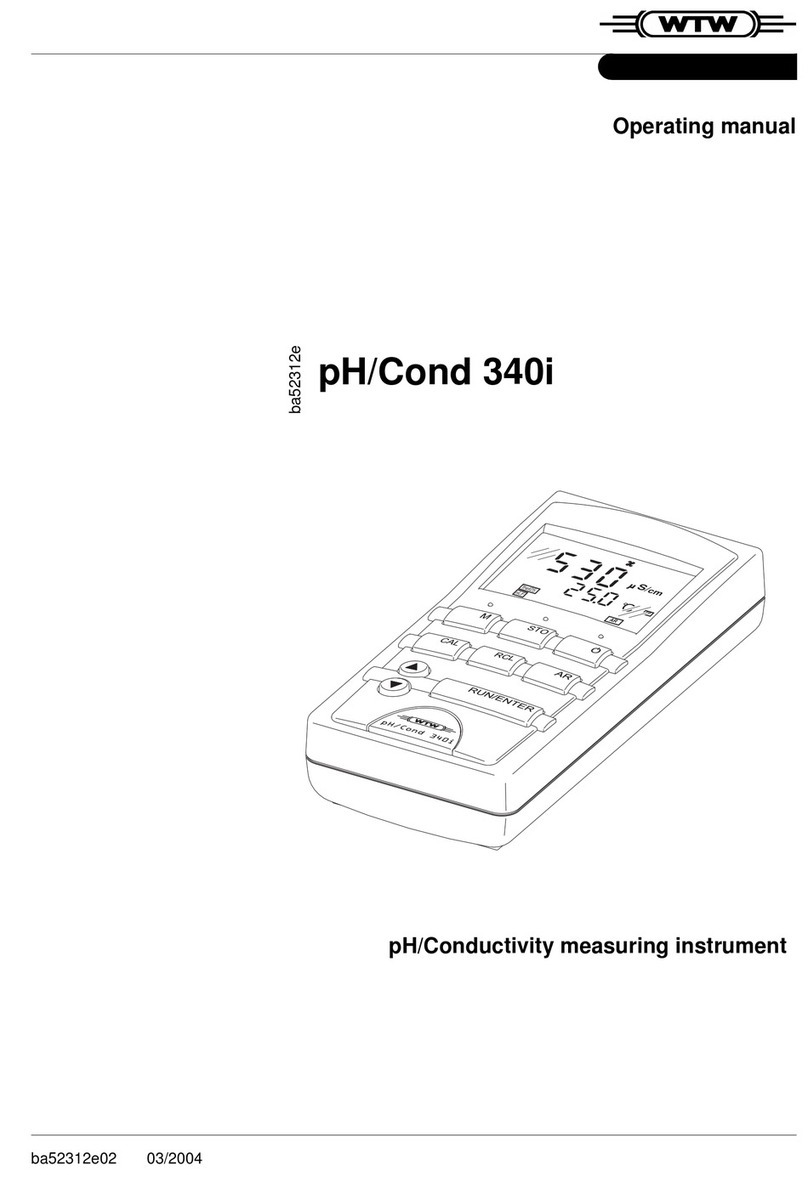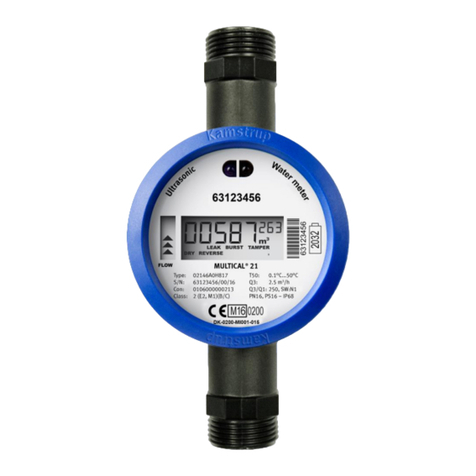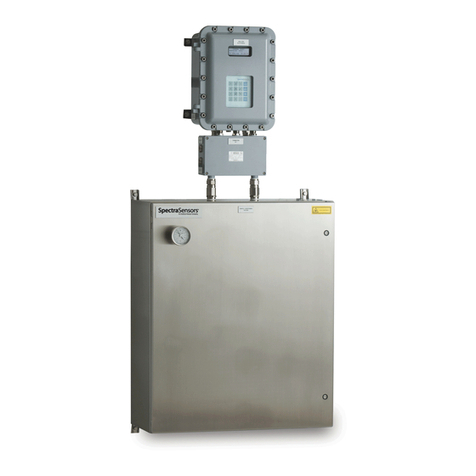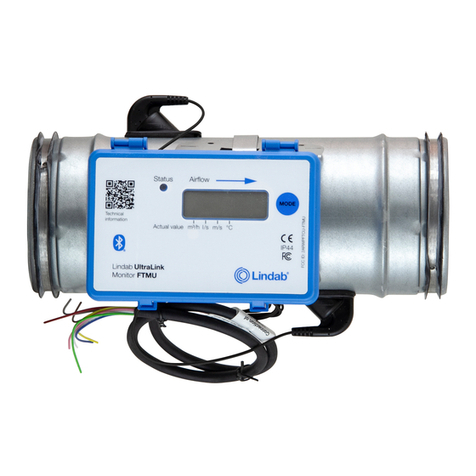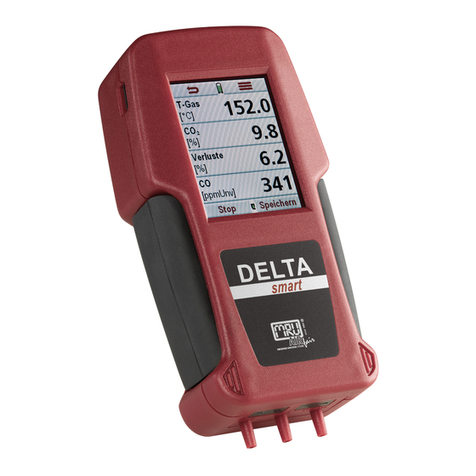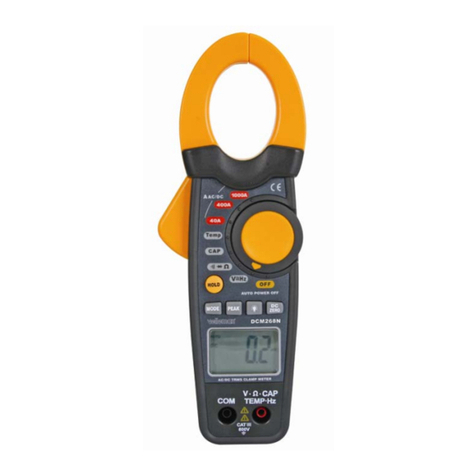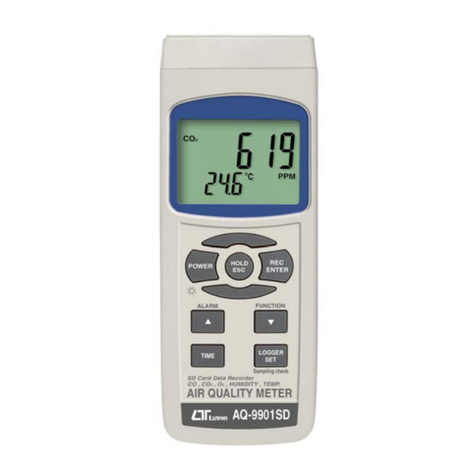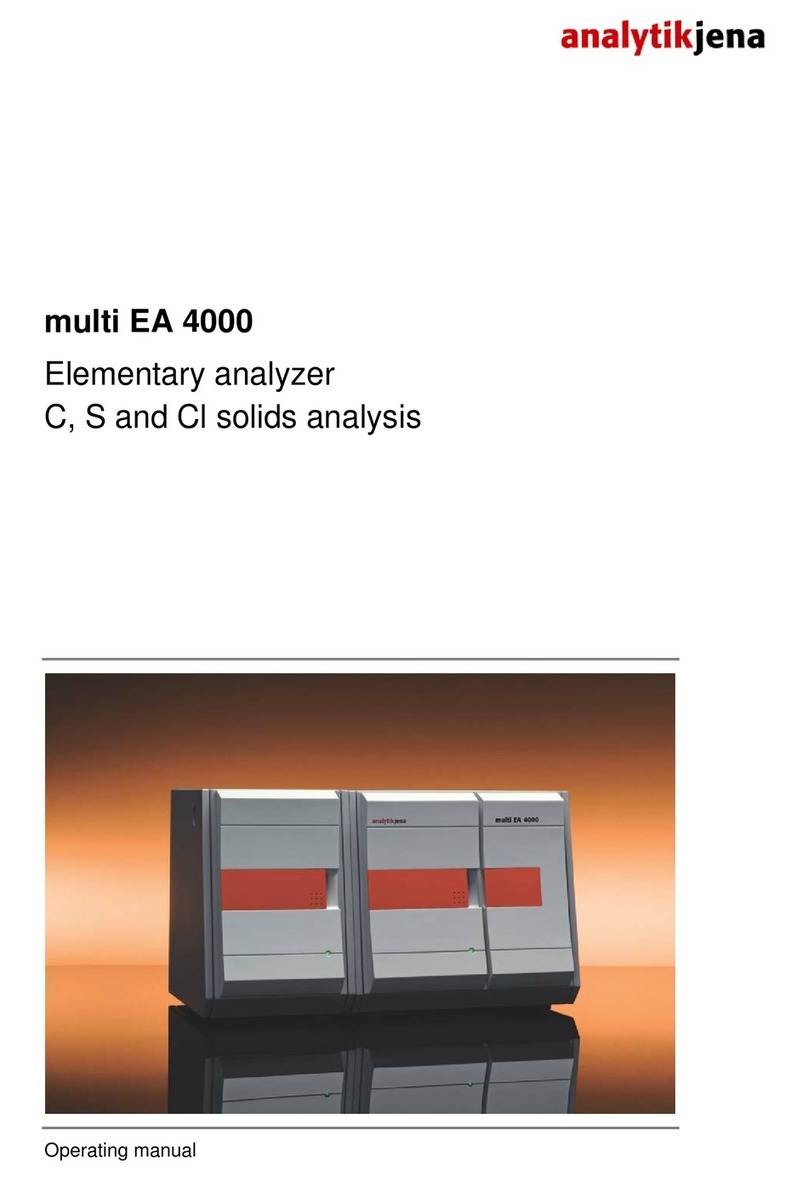
3
3.0 IMPORTANT - pen probe care
pH probes do not last forever. They age through normal use and will eventually
fail. The lifetime of a probe depends on the environment it is used in and the way
it is treated. To ensure you receive a long life from your pen, please ensure you
follow the guide below.
Storing the pen
When storing the pen the probe tip must be kept moist.
To prepare the probe for storage, place a small amount of clean water (never
distilled or deionised water) or pH 4.0 solution into the wetting seal inside the
storage cap. Then place the seal and cap over the probe tip.
Long term storage
For long term storage, place the pen upright in a glass of tap water with the
storage cap off to ensure constant hydration.
If the probe has been accidentally allowed to dry out:
The probe must be ‘hydrated’ for 24 hours in fresh clean water (never distilled
or deionised water). Following this; carry out a calibration to check if the probe
has already suffered permanent damage.
4.0 Cleaning
To ensure accurate readings the probe needs to be rinsed in water before
replacing the storage cap and cleaned regularly using the following instructions.
Rinse probe tip under fresh water.
Fill small container with clean water.
Add a small amount of Bluelab pH Probe Cleaner
or mild detergent (dish washing liquid).
Gently stir the probe tip in the mixture.
Ensure that you do not ‘knock’ the pen on the side
of the container as this may cause damage to the
glass probe. Rinse well under fresh running water
to remove all traces of the detergent mixture.
If the probe requires removal of heavy
contamination:
Gently brush around the glassware with a few
drops of Bluelab pH Probe Cleaner or mild
detergent (dishwashing liquid) and a soft
toothbrush.
Rinse well under fresh running water to
remove all traces of the detergent mixture.
Calibration of the probe is required after every
clean.
See the pH calibration in section 6.0. Place
storage cap back onto the probe.
1
2
3
4
5
6
DO NOT let the probe tip dry. IF IT DRIES IT DIES!
DO NOT knock the pen; this will break its external glass bulb or
internal glass tube.
DO NOT touch the glass bulb with your ngers as this will
contaminate the glass.
DO NOT plunge a cold probe into a hot liquid (or visa versa) -
sudden temperature changes can crack the glass and permanently
damage the pen.
DO NOT immerse in oils, proteins or suspended solids that will leave
a coating on the glass bulb.
Temperature probe
Glass bulb
Wick
Storage cap
Wetting seal
Detergent
5.0 Battery replacement
The pH pen is powered with 1 x AAA alkaline battery. Do not use rechargeable
batteries. A low battery warning is indicated by a battery symbol appearing on the
screen. Only remove the battery cap when the batteries require changing. Battery
life is expected to be 350 hours.
To remove old battery
Undo battery cap fasteners. Remove battery cap and tip out
the old battery.
Check for corrosion
Flat batteries may leak and cause corrosion. Check battery
contacts and the battery for any sign of corrosion. Battery
contacts should be cleaned first if corrosion is found before
proceeding to step 3.
Fit new battery
Insert the new batteries positive (+) end down into the body.
Ensure waterproof battery cap seal is clean
Seal will fail if any dirt is present.
Replace battery cap
Tighten fasteners on battery cap until there is no space left
between the cap and body. This ensures the unit remains
100% waterproof.
1
2
3
4
5
Waterproof seal










